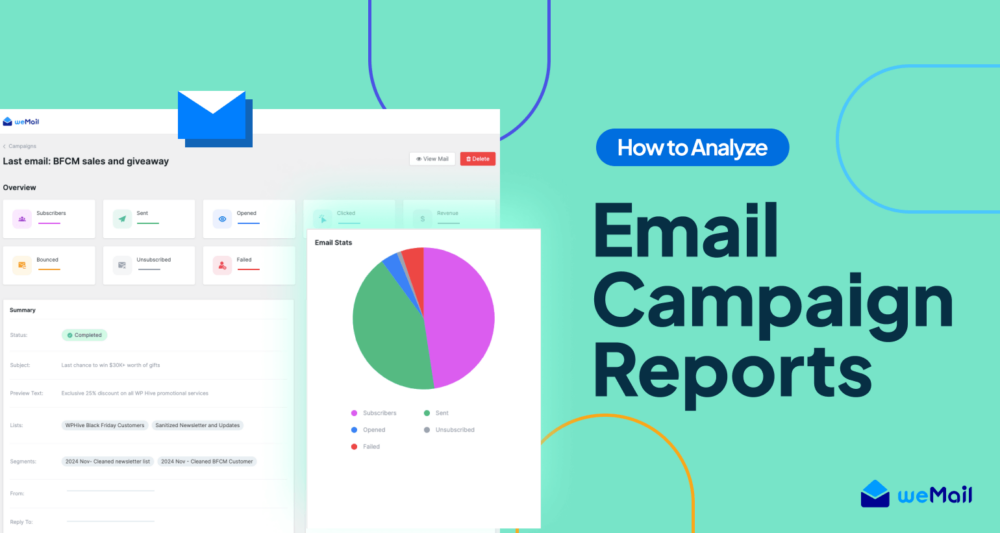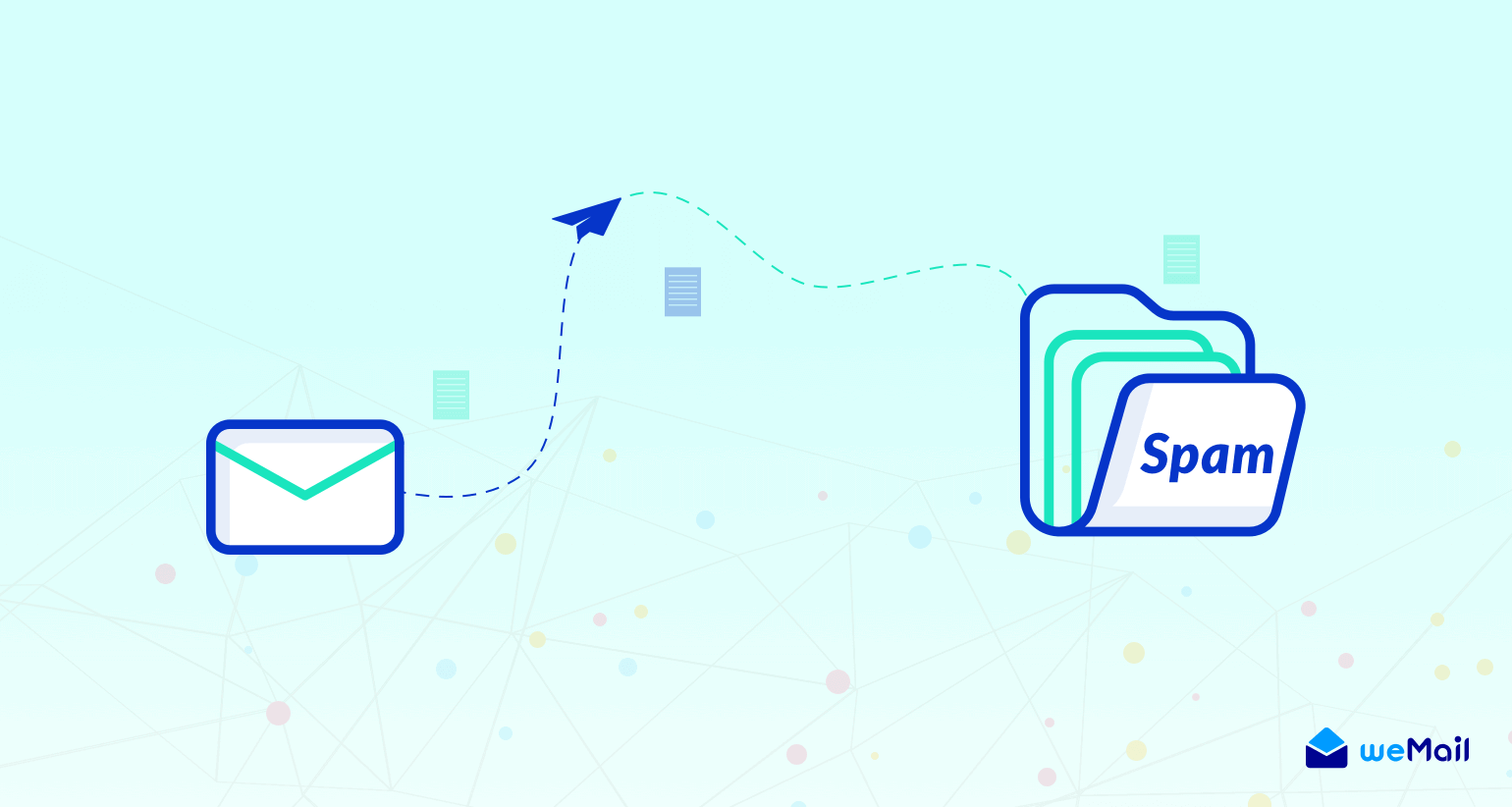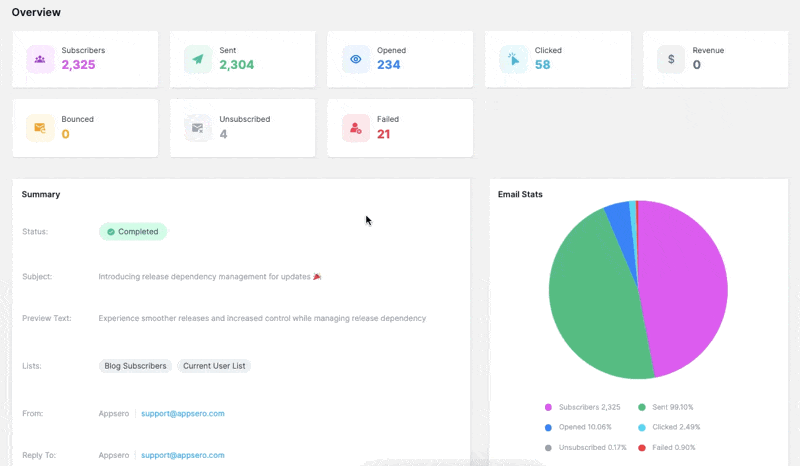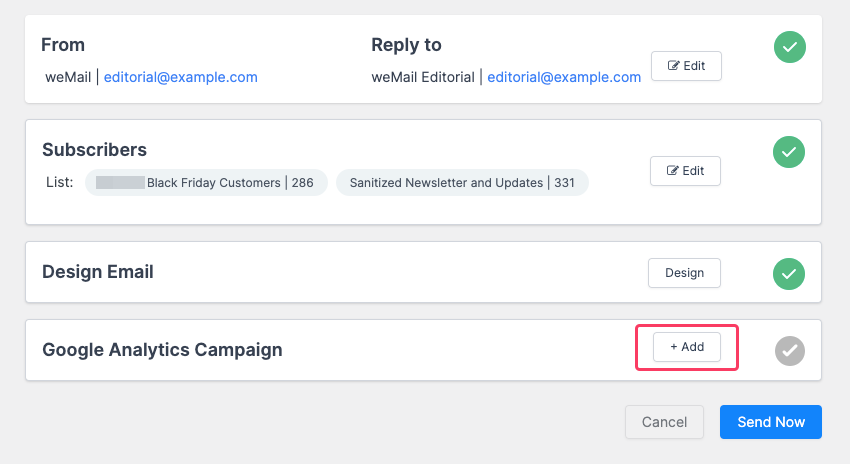How to Analyze Email Campaign Reports and Drive Better Results

With new marketing channels emerging each year, the marketing space is more competitive than ever. Yet, email marketing remains one of the most effective ways to nurture leads and drive conversions.
However, sending emails is only half the battle, measuring and analyzing their performance is important for long-term success. This is where email campaign reports can contribute.
How? By tracking key metrics, you can gain valuable insights into your audience’s behavior, refine your strategies, and improve your results. In this guide, we’ll explore what an email campaign report is and how to analyze email campaign reports to drive better results.
What Is an Email Campaign Report?

An email campaign report is a detailed analysis of your email marketing performance. It provides a snapshot of how your emails are performing by tracking various metrics such as open rates, click-through rates, and conversions.
These reports help you understand what’s working, what’s not, and where there’s room for improvement. Whether you’re using a basic email tool or a sophisticated platform like weMail, Mailchimp, or Klaviyo, campaign reports are essential for making data-driven decisions and refining your email strategy.
Why You Should Track Email Marketing Metrics
Tracking email marketing metrics is more than just a best practice. Without measuring and analyzing these metrics, how would you gain the valuable insights needed to achieve your email marketing goals? Here’s why tracking these metrics is so important:
- Measure Success: Metrics help you determine whether your campaigns are meeting their goals, such as driving sales or increasing engagement.
- Identify Weaknesses: By analyzing underperforming areas, you can pinpoint issues like low open rates or high unsubscribe rates.
- Improve Deliverability: Tracking high bounce rates or spam complaints can help you take proactive steps to address issues and ensure that your emails reach the intended recipients.
- Optimize Campaigns: Data-driven insights allow you to tweak subject lines, content, and design for better results and subscriber experience.
- Prove ROI: Tracking metrics like revenue per email helps you demonstrate the value of your email marketing efforts to stakeholders.
Without tracking, you’re essentially flying blind. Metrics provide the roadmap to success.
Essential Metrics to Monitor in Your Email Marketing Report

To truly understand the effectiveness of your email campaigns, you need to focus on the right metrics. Let’s dive into the essential metrics every email marketer should track.
1. Open Rate
The open rate measures the percentage of recipients who open your email. It’s a key indicator of how well your subject lines and sender name resonate with your audience. A low open rate may suggest that your subject lines need improvement or that your emails are landing in spam folders.
2. Click-Through Rate (CTR)
CTR tracks the percentage of recipients who click on links within your email. This metric shows how engaging your content is and whether your call-to-action (CTA) is effective. A high CTR indicates that your email content is compelling and relevant to your audience.
3. Conversion Rate
The conversion rate measures the percentage of recipients who complete a desired action, such as making a purchase or signing up for a webinar, after clicking through your email. This is one of the most important metrics, as it directly ties your email efforts to business outcomes.
4. Bounce Rate
The bounce rate reflects the percentage of emails that couldn’t be delivered to recipients’ inboxes. There are two types of bounces: hard bounces (permanent delivery failures, like invalid email addresses) and soft bounces (temporary issues, like a full inbox).
5. Unsubscribe Rate
This metric shows the percentage of recipients who opt out of your email list after receiving a campaign. A high unsubscribe rate may indicate that your content isn’t relevant or that you’re sending emails too frequently.
6. Spam Complaint Rate

The spam complaint rate measures how many recipients mark your email as spam. A high spam rate can damage your sender’s reputation and affect deliverability. To avoid this, ensure your emails provide value and comply with anti-spam regulations like GDPR and CAN-SPAM.
Also read: Most Common Reasons Why Email Goes to Spam and How to Fix It
7. Revenue per Email
This metric calculates the average revenue generated from each email sent. It’s a powerful way to measure the financial impact of your campaigns and determine which emails drive the most value.
8. Engagement Rate
Engagement rate combines multiple metrics, such as opens, clicks, and social shares, to provide a holistic view of how recipients interact with your emails. It’s a great way to gauge overall audience interest and content effectiveness.
9. Deliverability Rate
The deliverability rate measures the percentage of emails that successfully reach recipients’ inboxes. High deliverability ensures your emails are seen, making it a critical metric for campaign success. Factors like sender reputation, list quality, and email content influence deliverability.
How to Analyze Email Performance for Insights
Analyzing email performance is a systematic process that helps you uncover valuable insights to improve your campaigns. Here’s a step-by-step guide to effectively analyze your email performance:
Step 1: Gather Your Data
Start by collecting data from your email marketing platform. Tools like weMail make this easy by providing a centralized dashboard where you can access all your campaign metrics in one place.
Ensure you have data on key metrics such as open rates, click-through rates (CTR), bounce rates, and conversions. Here’s a glimpse of weMail’s report overview page of a campaign:

Step 2: Review Key Metrics
Examine the core metrics to get a high-level overview of your campaign’s performance. While there are numerous metrics you can track, as we mentioned earlier in this article, the following key metrics are essential and must be checked to ensure your email marketing success:
Open Rate: Are your subject lines and sender names compelling enough to grab attention?
Industry Standard: Average open rates typically range between 15% and 25%, depending on your industry.
What to Do: If your open rate is below the standard, test different subject lines, personalize sender names, or optimize send times.
CTR: Is your content engaging, and are your CTAs effective?
Industry Standard: Average CTRs usually fall between 2% and 5%.
What to Do: If your CTR is low, focus on improving your email content, making CTAs more prominent, or segmenting your audience for better targeting.
Bounce Rate: Is your email list clean and up-to-date?
Industry Standard: A healthy bounce rate is typically below 2%.
What to Do: If your bounce rate is high, clean your email list regularly and remove invalid or inactive addresses.
Conversion Rate: Are your emails driving the desired actions?
Industry Standard: Average conversion rates range from 1% to 3%, though this can vary widely by industry.
What to Do: If conversions are low, ensure your landing pages are optimized, your offers are compelling, and your emails are aligned with your audience’s needs.
Step 3: Segment Your Audience
Break down your data by audience segments (e.g., demographics, behavior, or engagement levels). This helps you identify which groups are responding well and which ones need more targeted messaging.

Step 4: Identify Trends and Patterns
Look for trends over time. For example:
- Do certain types of emails (e.g., promotional vs. informational) perform better?
- Are there specific days or times when engagement is higher?
- Which email designs or formats (e.g., plain text vs. HTML) resonate most with your audience?
Read more: Best Days to Send Emails: A Step by Step Guide for Email Marketers
Step 5: Conduct A/B Testing
Run A/B tests to experiment with different elements of your emails, such as subject lines, CTAs, images, or send times. Use the results to determine what works best for your audience. weMail’s A/B testing feature can help you streamline this process and make data-driven decisions.
Step 6: Leverage Advanced Analytics
Use advanced analytics tools to dive deeper into your data. For instance:
- Track the customer journey to see how email interactions lead to conversions.
- Measure revenue per email to understand the financial impact of your campaigns.
- Monitor engagement rates to gauge overall audience interest.
weMail provides in-depth analytics and reporting features to help you uncover these insights effortlessly. You can also add Google Analytics Campaign to your emails using weMail.

Step 7: Implement Changes and Monitor Results
Once you’ve analyzed your email campaign data and drawn insights, the next step is to put those findings into action. Here’s how to refine your strategy and track improvements:
- Make Data-Driven Adjustments – Update subject lines, content, CTAs, and sending schedules based on key performance metrics.
- Improve Deliverability – Clean your email list, optimize for spam filters, and adjust frequency to reduce bounce and unsubscribe rates.
- A/B Test Strategically – Continuously experiment with different email elements and measure which variations perform best.
- Monitor Key Metrics – Keep tracking open rates, CTR, conversions, and engagement to assess the impact of your changes.
- Adjust in Real Time – Be flexible and tweak strategies based on ongoing campaign performance.
- Document Learnings – Keep track of what works and what doesn’t to refine future campaigns efficiently.
By following these steps and using weMail, you can transform raw data into actionable insights and ensure your email marketing efforts are always moving in the right direction.
Enter your email address below to install the weMail plugin for free:
Best Strategies to Manage Email Marketing Analytics Reporting
Managing email marketing analytics doesn’t have to be time-consuming or overwhelming. With the right strategies, you can manage your reporting process and focus on what truly matters. Here are seven effective strategies to simplify your email marketing analytics reporting:
1. Use Pre-Built Email Marketing Report Integrations
Why start from scratch when you can leverage pre-built integrations? All popular email marketing platforms often come with ready-to-use report templates and integrations with analytics tools like Google Analytics. These integrations save time and ensure you’re tracking the most important metrics without manual setup.
2. Add Custom Metrics If Required
While standard metrics like open rates and CTRs are essential, adding custom metrics tailored to your specific goals can provide deeper insights. For example, track metrics like revenue per email, customer lifetime value (CLV), or engagement rates to gain a more comprehensive understanding of your campaign’s impact.
3. Create Goals and Annotations to Highlight Important Insights

Set clear goals for your campaigns and use annotations to mark significant events or changes. For instance, note when you implemented a new strategy or launched a major campaign. This helps you correlate changes in performance with specific actions, making it easier to identify what’s working.
4. Determine Whether to Grant Client Login Access
If you’re managing email campaigns for clients, decide whether to grant them direct access to your analytics dashboard. While some clients may prefer hands-on access, others might only need periodic reports. weMail allows you to control access levels, ensuring clients see only the data they need.
5. Tell a Story of What’s Happening
Data is more impactful when it tells a story. Instead of presenting raw numbers, interpret the data to explain what’s happening and why. For example, highlight how a spike in CTR led to increased conversions or how a new segmentation strategy improved engagement. Tie these insights into the bigger picture of your marketing goals.
6. Set Up Internal Tasks to Keep Tabs on Progress
Assign specific tasks to team members to monitor and act on analytics insights. One person could be responsible for A/B testing subject lines, while another focuses on cleaning the email list. This ensures accountability and keeps your campaigns on track.
7. Schedule and Automate Email Marketing Reports
Manual reporting can be a time drain. Use automation tools to schedule and send reports at regular intervals. Choose a platform that allows you to set up automated reports that deliver key metrics directly to your inbox or your client’s inbox. This ensures everyone stays informed without extra effort.
By implementing these strategies, you can manage your email campaign report with minimal effort while gaining actionable insights to optimize your campaigns. weMail makes it even easier with a powerful dashboard that’s packed with every piece of information, insight, and data you need to optimize your campaigns.
Subscribe for Email Marketing Tips and Insights
Want to stay ahead in the world of email marketing? Subscribe to our newsletter for the latest tips, insights, and strategies delivered straight to your inbox. Whether you’re looking to improve your analytics, boost engagement, or drive conversions, we’ve got you covered. Don’t miss out, join our community of email marketing enthusiasts today!
Enter your email address to subscribe:



